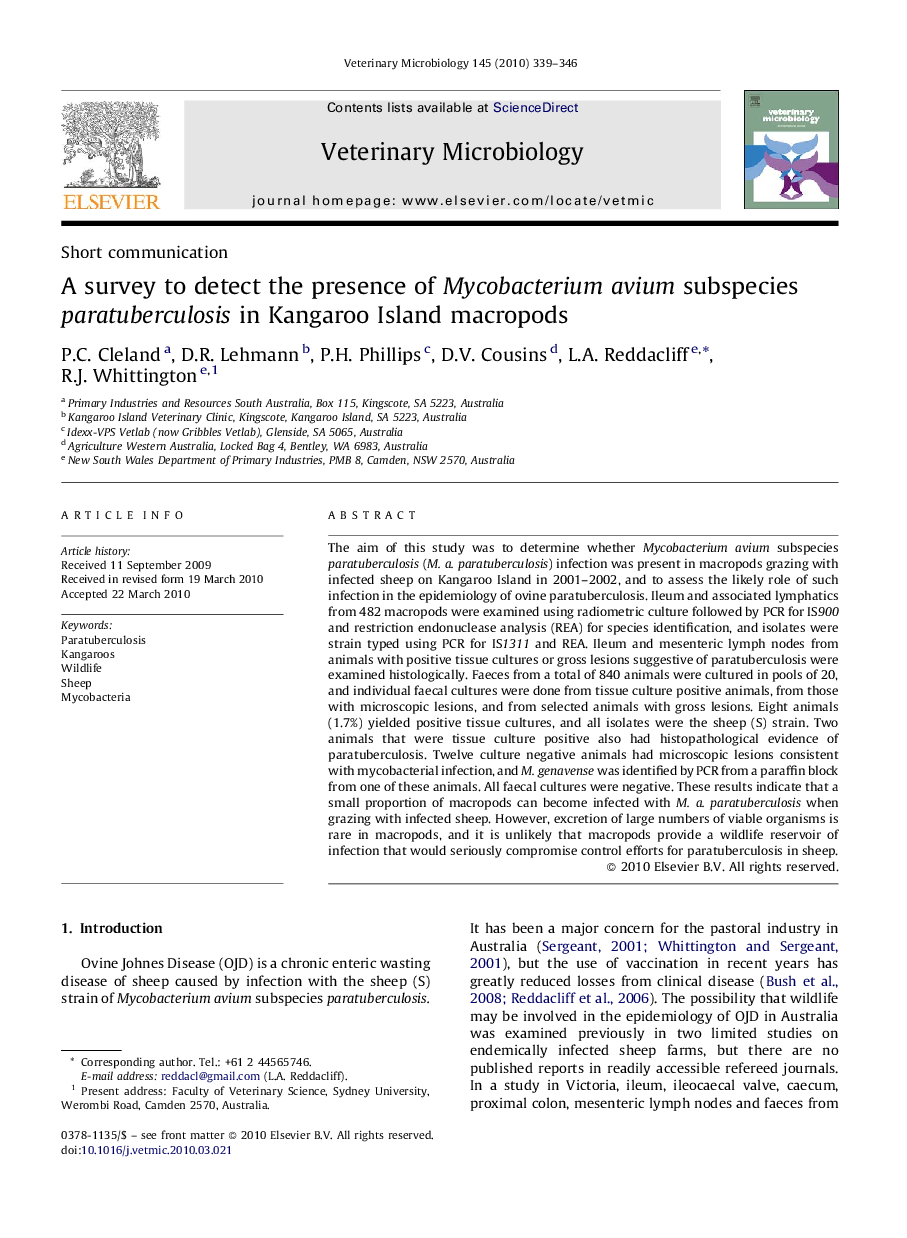| Article ID | Journal | Published Year | Pages | File Type |
|---|---|---|---|---|
| 2467932 | Veterinary Microbiology | 2010 | 8 Pages |
The aim of this study was to determine whether Mycobacterium avium subspecies paratuberculosis (M. a. paratuberculosis) infection was present in macropods grazing with infected sheep on Kangaroo Island in 2001–2002, and to assess the likely role of such infection in the epidemiology of ovine paratuberculosis. Ileum and associated lymphatics from 482 macropods were examined using radiometric culture followed by PCR for IS900 and restriction endonuclease analysis (REA) for species identification, and isolates were strain typed using PCR for IS1311 and REA. Ileum and mesenteric lymph nodes from animals with positive tissue cultures or gross lesions suggestive of paratuberculosis were examined histologically. Faeces from a total of 840 animals were cultured in pools of 20, and individual faecal cultures were done from tissue culture positive animals, from those with microscopic lesions, and from selected animals with gross lesions. Eight animals (1.7%) yielded positive tissue cultures, and all isolates were the sheep (S) strain. Two animals that were tissue culture positive also had histopathological evidence of paratuberculosis. Twelve culture negative animals had microscopic lesions consistent with mycobacterial infection, and M. genavense was identified by PCR from a paraffin block from one of these animals. All faecal cultures were negative. These results indicate that a small proportion of macropods can become infected with M. a. paratuberculosis when grazing with infected sheep. However, excretion of large numbers of viable organisms is rare in macropods, and it is unlikely that macropods provide a wildlife reservoir of infection that would seriously compromise control efforts for paratuberculosis in sheep.
